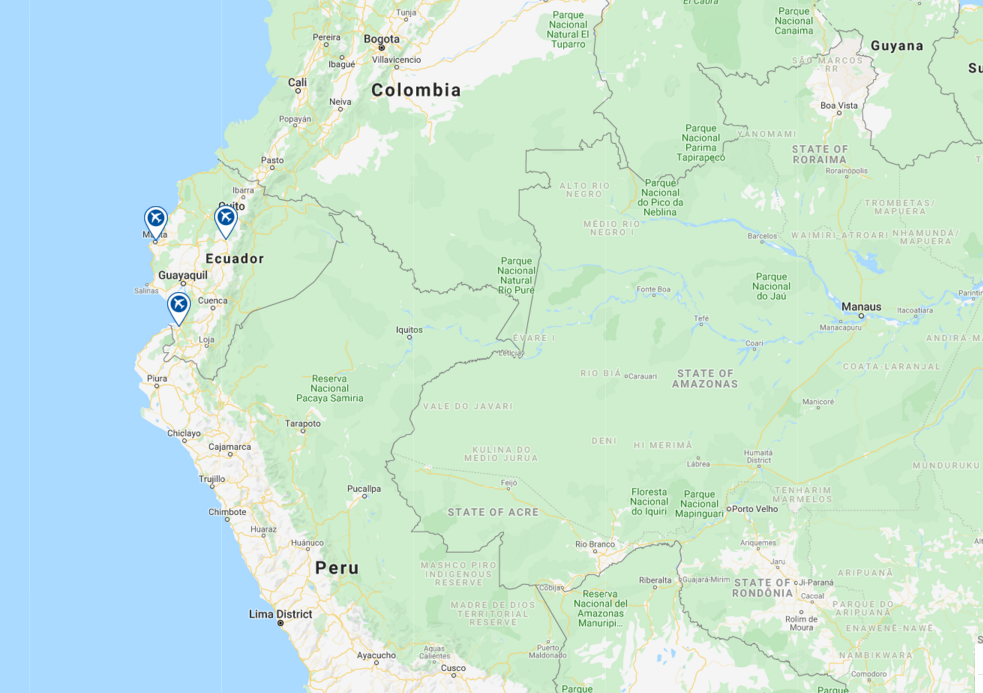This project was originally a private sector one, brought about by the need to deal with insufficient capacity because demand for the nearby Velazco Astete Airport, Peru's second busiest, had steadily increased.
Chinchero Cusco International Airport is intended to replace Velazco Astete Airport as the primary one in the region. Velazco Astete handles approximately 3.5 million passengers per annum. Seat capacity was increased by 23% in 2018 and has remained stable this year.
Seat capacity by airline for Cusco Velazco Astete Airport, week commencing 21-Oct-2019
 Source: CAPA - Centre for Aviation and OAG
Source: CAPA - Centre for Aviation and OAG
Construction began in early 2017. Kuntur Wasi ('Condor's Nest'), a consortium which included AA2000/Corporación América and the local company Andino Investment Holding, was awarded the rights to design, build, finance, operate and maintain the airport in the town of Chinchero (home to a community of about 12,000 people) with a bid of USD264.7 million for a 40-year concession.
Kuntur Wasi would invest 53% of the total project value of USD658 million and the government would pay for the remaining 47%.
The new airport would have an initial capacity to serve five million passengers annually, rising to eight million, with a 4000m runway. Direct services were envisaged to Chile, Brazil, Argentina, Paraguay, Panama, and Ecuador.
While Cusco and Chinchero have tourist appeal, like its predecessor the airport would be the gateway to the world famous Macchu Picchu Inca ruins, which are about 100km distant.
Cusco, Chinchero (centre of map) and Macchu Picchu
 Source: Google Maps
Source: Google Maps
The project ran into financing difficulties early on while the regulator was approving the consortium's funding, delaying the commencement of work until after when it should have been open, and Kuntur Wasi requested that Peru's Transport and Communications Minister incorporate an anti-corruption clause in the concession contract.
Then, in Feb-2017, the Ministry suspended all obligations under its agreement with Kuntur Wasi related to the operation and construction of the airport, pending an investigation of the concession contract.
Subsequently, construction was delayed again when the government reported that the contract had been changed after it had found that costs of financing would be high and that it was at risk because it would be required to pay a cash advance to Kuntur Wasi and Corporación América.
In May-2017 the President, Pedro Pablo Kuczynski, announced that the construction of the airport would go ahead but that changes would be made to the form that construction would take.
The following month the Ministry reached an agreement with Kuntur Wasi for the cancellation of the contract "for reasons of public interest". Andino Investment Holding announced that Kuntur Wasi would seek international arbitration against Peru for breach of contract.
Preparatory works resumed in 2018, with Phase I - mainly ground levelling - being financed by the Peruvian State, with a USD200 million investment. The completion date was revised to 2021.
But there were always suspicions that the project would return to the private sector, and they were given sustenance in Jul-2019 when a South Korean consortium led by Korea Airports Corporation (KAC) secured the construction tender, winning against other proposals from Canada, Spain, France and Turkey. While KAC is involved in construction activities, it has coveted operating concessions in South America for some time and is particularly active in that respect in neighbouring Ecuador.
Then, in Oct-2019 the Ministry announced that Peru and South Korea had signed a contract for technical assistance for the construction and operation of the new airport. The contract was now valued at USD770 million, and would start on 01-Nov-2019.
Construction (beyond ground levelling) is scheduled to begin in 1H2020, with the airport now to be operational in 2024.
While there is no certainty that KAC (which operates 14 domestic airports in South Korea) will take on the concession, its active involvement in the airport construction, together with its existing commitments in Ecuador - where it is pitching to operate three airports, with possibly more to follow - suggests that it is a strong contender to be offered it; and that it would take it.
Active airports for KAC in Ecuador, South America (Cusco is at the bottom of the map)
 Source: Google Maps
Source: Google Maps